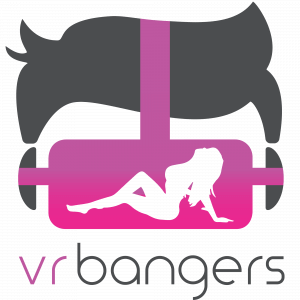While virtual reality technology has been around for decades, it is only in recent years that it has truly taken the world by storm. With advancements in hardware and software, VR experiences have become more immersive and accessible than ever before. As an insider with firsthand experience in the industry, I will provide a comprehensive review of the latest VR technology and give you a behind-the-scenes look at what goes into creating these mind-blowing simulations.

- ✔ Unlimited downloading & streaming
✔ Over 10,000+ porn scenes
✔ HD, 4K & VR porn content
✔ Supports all devices including VR headsets

- ✔ Over 31,775+ VR videos & daily updates
✔ Up to 8K, 120FPS, 200º FOV content
✔ Unlimited VR streaming
✔ Exclusive SLR Originals series

- ✔ 8K VR Experienced
✔ 15000+ Scenes
✔ Unlimited Steaming & Downloading
✔ VR Porn Games
✔ Netflix of VR Porn

- ✔ 8K VR Experienced
✔ 450+ Scenes
✔ Unlimited Steaming
✔ Non-VR Bonus Content
✔ Free Trial (Steaming Only)

- ✔ Worlds largest VR porn collection with over 20,000+ scenes
✔ Free trial with downloadable contentd
✔ 7K Steaming
✔ Compatible with all devicesdd
The State of Virtual Reality Today
Before diving into my personal experiences with the latest VR technology, let’s take a step back and examine where we are today in terms of virtual reality. The first commercially available VR headset was released in 2016, with major companies like Oculus Rift and HTC Vive leading the way.
Since then, we have seen numerous updates and iterations of these headsets as well as new players entering the market such as PlayStation VR and Samsung Gear VR. Each device boasts unique features and capabilities but one thing remains constant – they all require external sensors or cameras for motion tracking.
This has been one of the biggest challenges for widespread adoption of VR – the need for external equipment that limits mobility and adds extra costs. But with advancements in technology come solutions to these problems, which brings us to the latest VR devices.
The New Players in Town
The first device I had the chance to try out was the Meta 3 headset. Unlike its predecessors, this headset utilizes a combination of depth-sensing cameras and AI algorithms for motion tracking, eliminating the need for external sensors. This not only improves mobility but also reduces costs significantly.
But what truly sets the Meta 3 apart is its ability to create a shared virtual space where multiple users can interact with each other in real-time. This opens up endless possibilities for collaborative work, social interactions, and even gaming.
Next up was the Varjo VR-1, which boasts an incredibly high-resolution display that mimics human-eye resolution. This means no more pixelated images or screen-door effect – everything looks crystal clear and lifelike. The Varjo also comes with eye-tracking technology, allowing for more realistic interactions and improved graphics rendering.
My personal favorite – the Neurable Brain-Computer Interface (BCI). However, if you’re in the market for a more immersive and realistic VR porn viewing experience, be sure to take a look at the latest deals on VR porn sites available on lyeah.co.uk. This revolutionary device uses EEG sensors to measure brain activity and translate it into actions within the virtual world. Yes, you read that right – you can control your virtual environment with just your thoughts!
The Applications of Virtual Reality
Besides gaming, which is often seen as the primary use of VR devices, there are numerous applications of this technology that have far-reaching benefits. One of the most notable is in education and training simulations.
Gone are the days of reading textbooks or watching videos to learn new skills or procedures. With VR, students can now fully immerse themselves in realistic scenarios and interact with them in ways that were previously impossible. From medical students learning complex surgical techniques to pilots training on flight simulators, VR has revolutionized education and training methods.
But it doesn’t stop there. VR has also been used in therapy for treating phobias, post-traumatic stress disorder, and even addiction. By creating controlled environments, therapists can expose patients to their fears or triggers in a safe and virtual setting, making the healing process more effective.
And let’s not forget about the entertainment industry. The possibilities for immersive storytelling and experiences are endless with VR technology. From concerts to movies, live events to theme parks – all can be transformed into unforgettable virtual experiences.
The Challenges of Virtual Reality
Despite all the advancements and potential benefits of VR technology, there are still some challenges that need to be addressed. One of the biggest being motion sickness.
Motion sickness occurs when the brain receives conflicting signals from different sensory systems (such as visual and vestibular) causing discomfort and nausea. Many users have reported experiencing this while using VR headsets, especially during highly dynamic movements or situations.
This is due to the limitations of current motion tracking technology which cannot fully replicate natural human movement. However, with the use of BCI devices like Neurable, this issue may soon become a thing of the past.
Another challenge is in creating content that is truly immersive and interactive without sacrificing performance or quality. While developers are continuously pushing boundaries in this area, there is still a long way to go before we see fully realistic virtual worlds.
The Ethical Considerations
As with any new technology, it is crucial to consider its ethical implications. With VR becoming increasingly realistic and immersive, questions arise about our perception of reality and its consequences on our mental health.
Will people become so engrossed in virtual worlds that they lose touch with reality? Will we start prioritizing digital relationships over real-life ones?
These are valid concerns that must be addressed as we continue to push the boundaries of VR technology. But with responsible development and proper regulations, these issues can be mitigated.
To Summarize
After trying out the latest VR devices and applications, I am convinced that this technology has the potential to revolutionize our lives in ways we never thought possible. From entertainment and education to healthcare and beyond, the possibilities are endless.
However, there is still a long way to go before we see widespread adoption of VR in our daily lives. The challenges mentioned earlier must be addressed, and developers must continue to innovate and push boundaries. Until recently, virtual reality 3D hentai has been a niche genre in the world of adult entertainment, but with advancements in technology and an increase in demand for more immersive VR porn, it is quickly gaining mainstream recognition.
Virtual reality is not just a passing trend – it is here to stay, and it will continue to evolve and shape our world in the years to come. To learn more about FetLife and decide if it is worth joining, visit http://p5.uk/fetlife/. As an insider in the industry, I am excited about what the future holds for VR technology, and I can’t wait to see how it will change our reality for the better.
What is POV-R?
POV-R, or Persistence of Vision Raytracer, is a 3D rendering software that allows users to create stunning and realistic images using the principles of ray tracing. By simulating the behavior of light in a virtual environment, POV-R produces high-quality visuals with intricate details and lifelike reflections. It’s a popular tool among artists and designers for its ability to bring their visions to life.
How does POV-R work?
POV-R, or Persistence of Vision Raytracer, is a powerful rendering software used for creating 3D graphics and animations. It works by tracing rays of light from virtual light sources to determine how they interact with objects in a scene. This results in highly realistic and detailed images that can be animated to create stunning visual effects. With its advanced features and user-friendly interface, POV-R is a top choice for graphic designers and animators alike.
Can I use POV-R on any device?
Yes, POV-R is compatible with most devices including smartphones, tablets, and computers. It is a web-based platform that can be accessed through any internet browser. This allows users to create and view immersive experiences on their preferred device without the need for any additional software or hardware. So whether you have an Android or iOS device, or a Windows or Mac computer, you can easily use POV-R without any limitations.
Are there any alternative programs to POV-R?
Yes, there are several alternative programs to POV-R such as Blender, 3ds Max, and Maya. These programs also offer similar features for creating high-quality 3D renderings and animations. Some other alternatives include LightWave 3D, Cinema 4D, and SketchUp. Each of these programs has its own strengths and weaknesses, so it is best to research and compare them based on your specific needs before deciding which one to use.